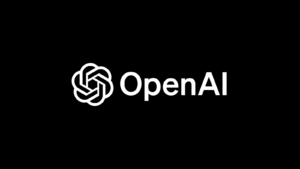As technology continues to reshape industries, economies, and our daily lives, universities are responsible for preparing students for a world increasingly driven by disruptive technologies. This principle includes helping students understand the difference between traditional algorithmic operations that follow explicit programmed instructions and artificial intelligence (AI)-driven decisions that often derive insights from patterns in large data sets without human-specified rules. By developing curricula on these technologies, universities can equip students with the skills and knowledge required to thrive in a technology-driven future. The need for such education is urgent, as industries from healthcare to finance and logistics are undergoing digital transformations that demand a new generation of tech-savvy professionals.
The traditional algorithms introduced to students in computer science and engineering courses are essential to understanding logical processes, procedural thinking, and data manipulation. These algorithms follow steps to solve specific problems, and their outputs are usually predictable. In contrast, AI-driven decisions rely on models that “learn” from data, uncovering relationships and making predictions that can sometimes surprise even the engineers who designed them. For instance, AI systems used in predictive analytics, image recognition, or natural language processing operate on complex data patterns that extend beyond straightforward, rule-based logic. This ability to make nuanced decisions, often based on probabilities rather than certainties, highlights a fundamental departure from traditional algorithms.
Incorporating a curriculum on disruptive technologies and AI decision-making would offer several advantages for students. Firstly, it prepares them for real-world applications where AI and automation are becoming essential tools. Take, for example, the role AI plays in the healthcare industry. Universities could use recent cases like the Mayo Clinic’s adoption of AI for disease prediction and personalised treatments. Here, students can learn how AI-driven diagnostics differ from traditional diagnostic methods, enabling faster, often more accurate medical assessments. By understanding the capabilities and limitations of both algorithmic processes and AI, students can contribute to fields like healthcare, where critical decisions rely on both types of technology.
Understanding AI decision-making versus traditional algorithmic operations is crucial in fields like finance. A report on Goldman Sachs highlighted how AI-driven systems now handle certain aspects of trading, using predictive analytics to forecast market trends. However, traditional algorithms are still critical in financial risk management, where rule-based logic applies. Students trained in both can discern where AI may offer advantages in adaptive forecasting and where traditional algorithms ensure robust safeguards. This dual understanding is crucial in high-stakes environments, allowing future finance professionals to leverage both approaches for optimal outcomes.
Universities must also address the ethical implications and biases associated with AI. Unlike traditional algorithms, which execute instructions as coded, AI can inadvertently inherit biases from the data it is trained on. For example, in hiring platforms, AI-driven decision-making has been shown to unintentionally discriminate based on gender or race due to biased training data. Students should be taught the mechanics of AI and its ethical dimensions. By understanding the difference between deterministic algorithms and probabilistic, data-dependent AI models, students are better equipped to identify and mitigate biases, fostering responsible technology use.
A curriculum on disruptive technologies would also benefit non-technical students, preparing them for a workplace increasingly shaped by AI and automation. Business students, for instance, could explore how AI-driven decisions impact customer behaviour analysis, marketing, and supply chain management. Universities could leverage examples like Amazon’s use of AI to predict demand and manage logistics, contrasting it with traditional supply chain models that rely on static, rule-based systems. By examining these applications, non-technical students gain a broader understanding of how AI can enhance business operations while still appreciating the critical role of traditional algorithms.
Introducing disruptive technologies into the curriculum supports universities’ innovation and industry relevance goals. As companies continue to demand employees who can work at the intersection of technology and strategic thinking, universities that offer this curriculum set their students apart, making them highly sought-after candidates. This educational shift is particularly relevant amid recent labour market shifts, where tech-driven roles continue to rise. Universities like Stanford and MIT have already begun integrating courses focused on AI ethics, machine learning, and digital transformation, underscoring the importance of such curricula.
Universities must evolve to introduce comprehensive curricula on disruptive technologies, helping students differentiate between traditional algorithmic processes and AI-led decision-making. By doing so, they equip future professionals with the skills to harness technology responsibly and innovatively, preparing them for the complex demands of an increasingly AI-driven world.



